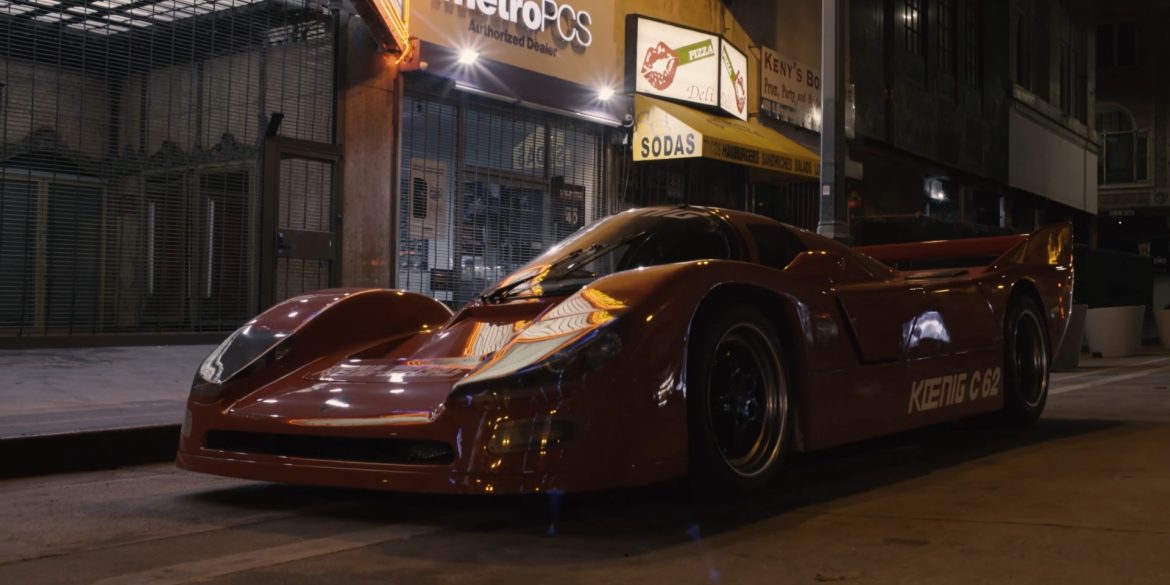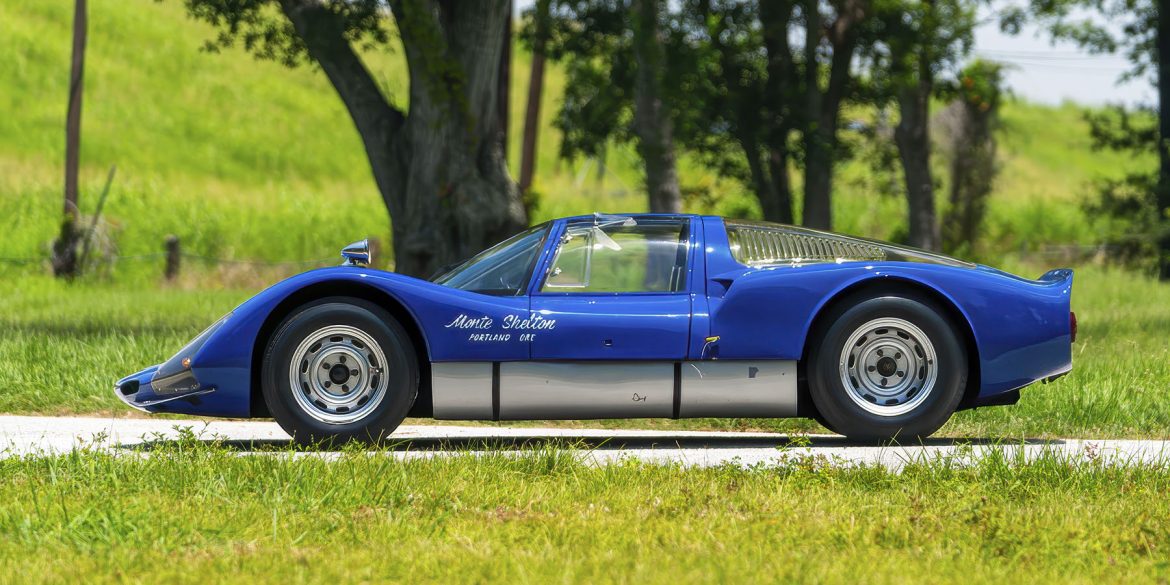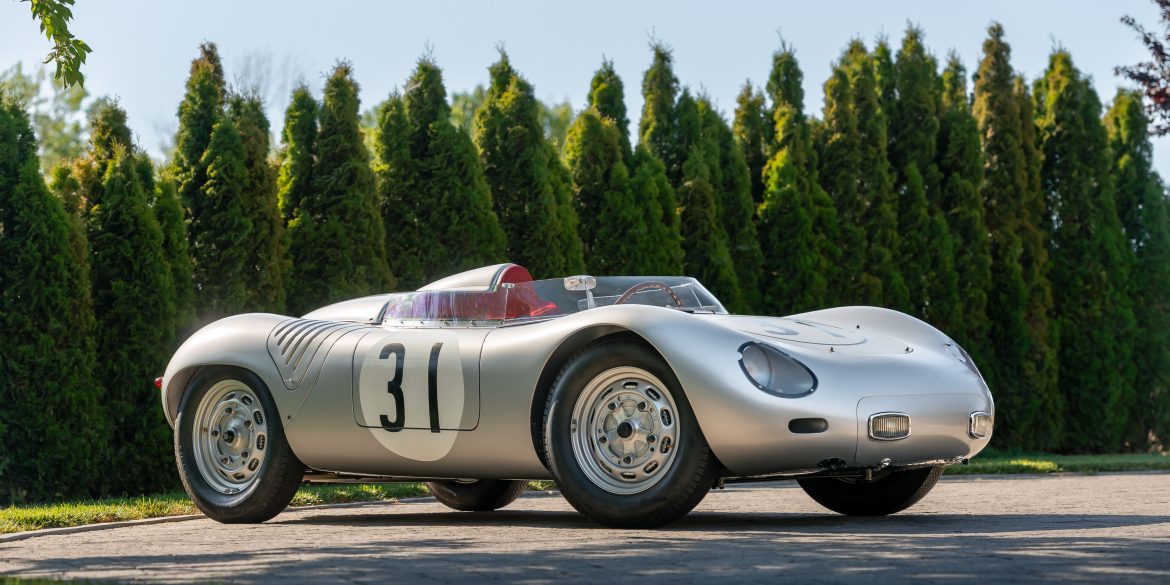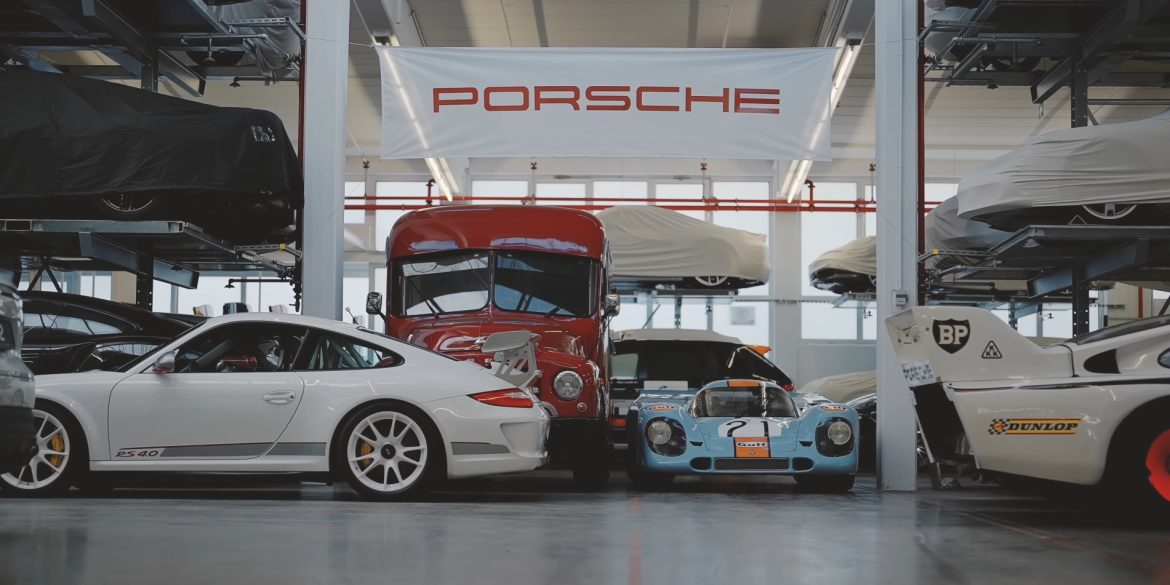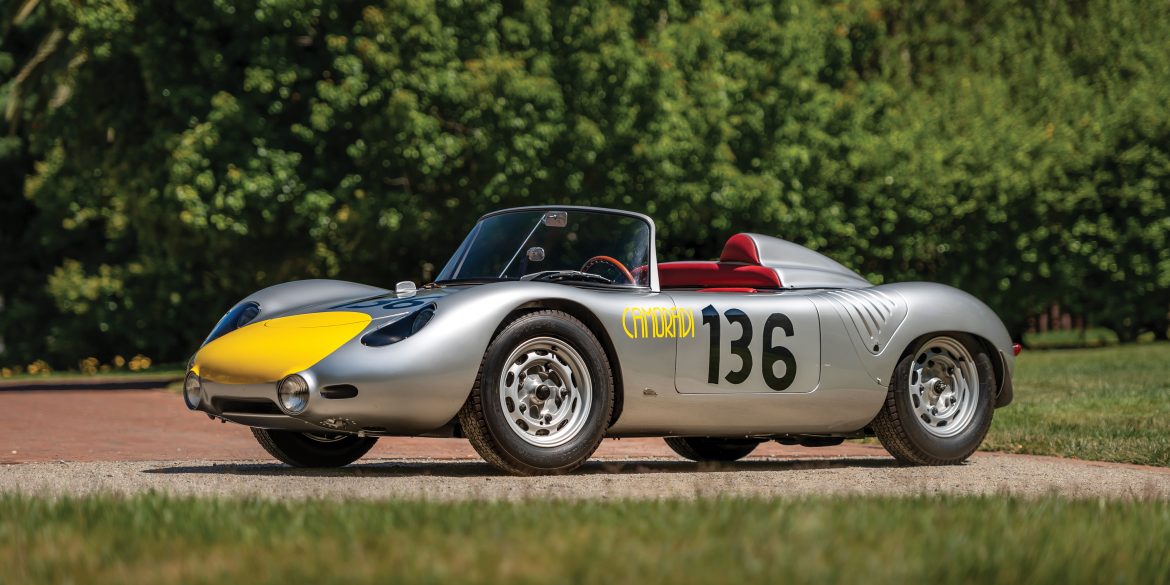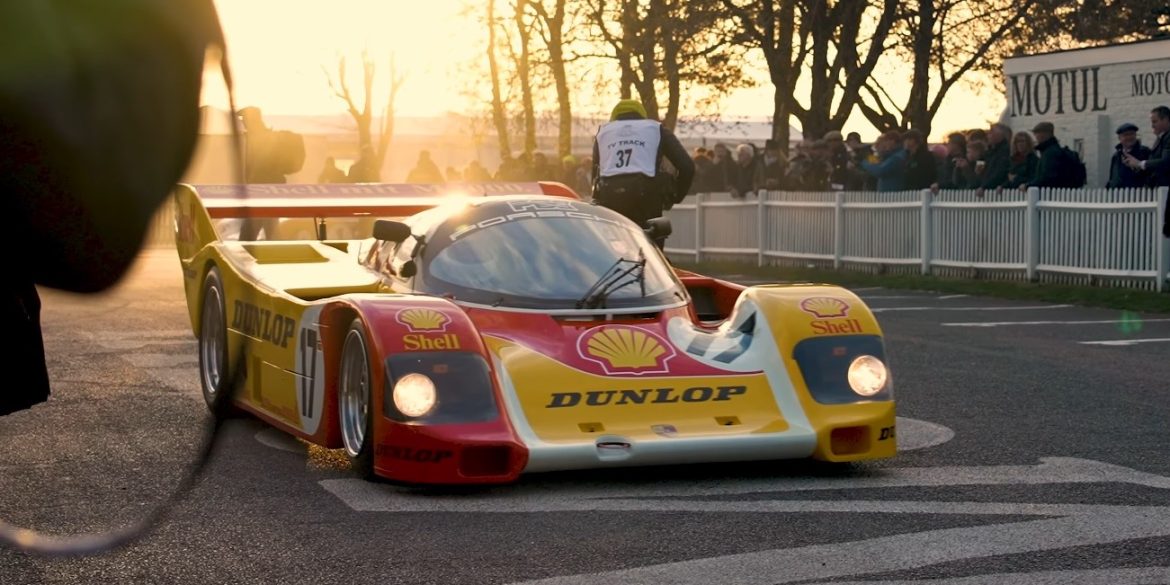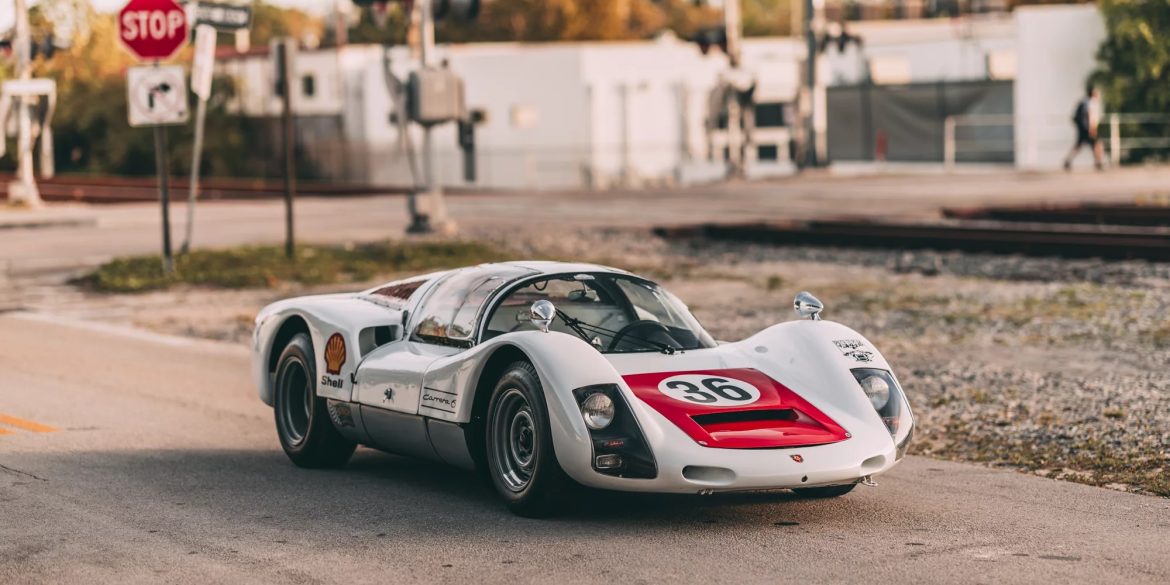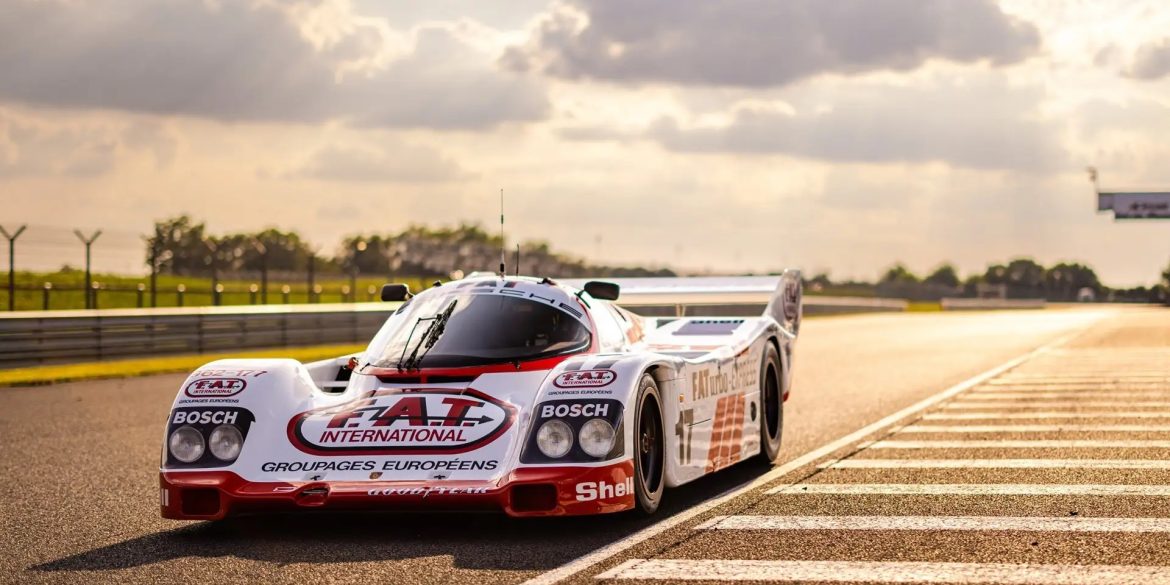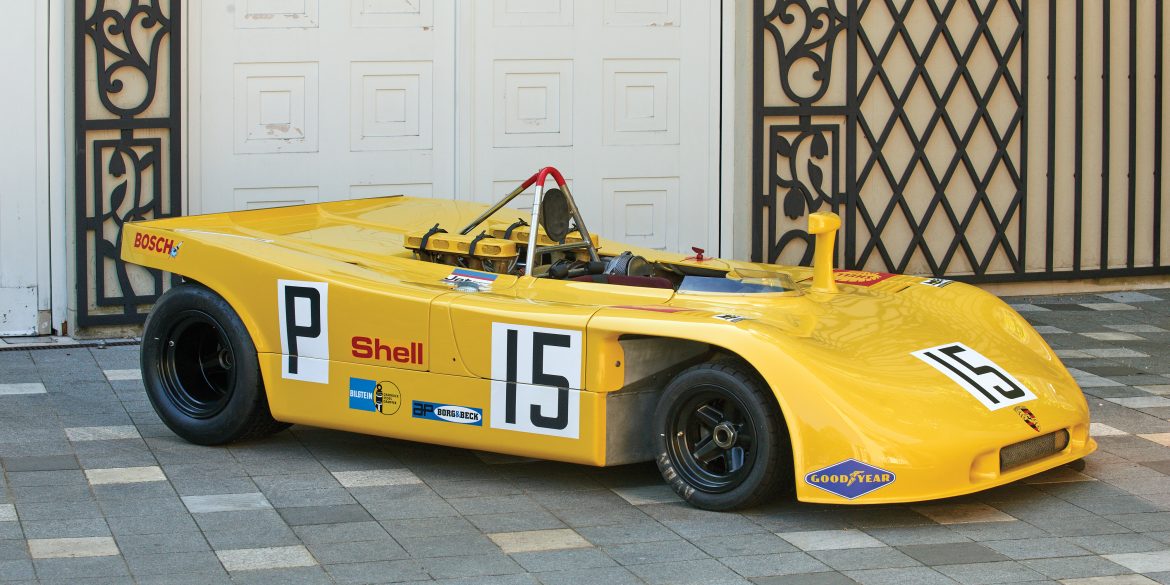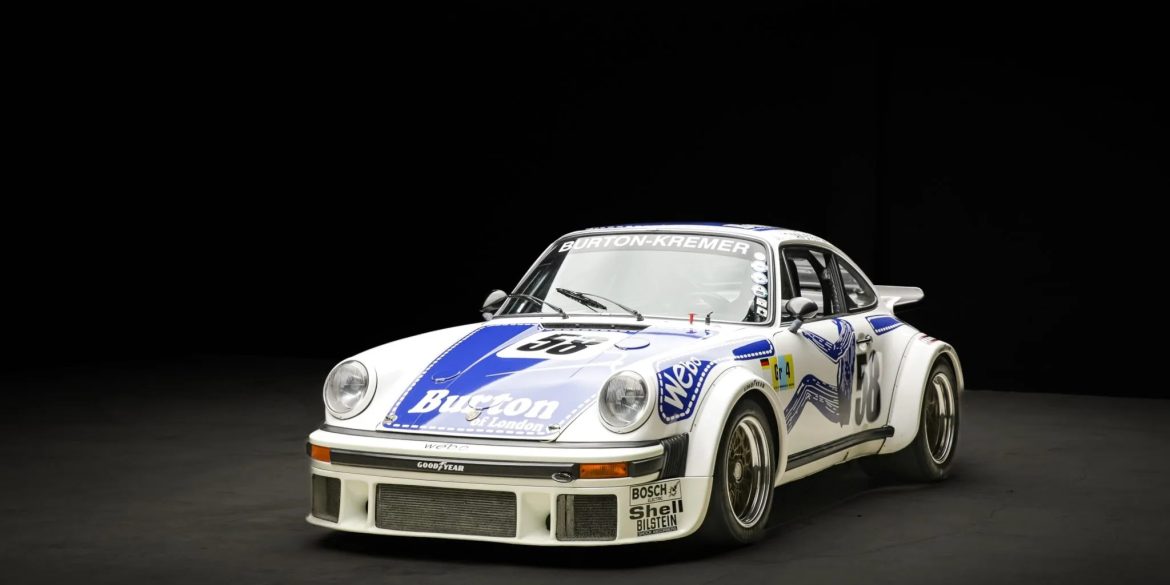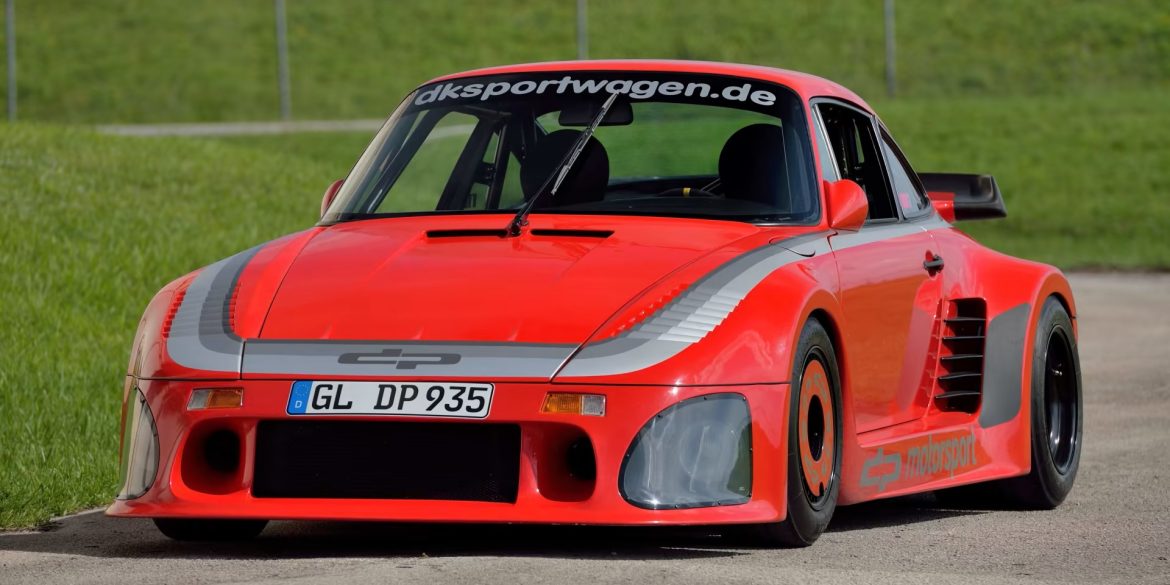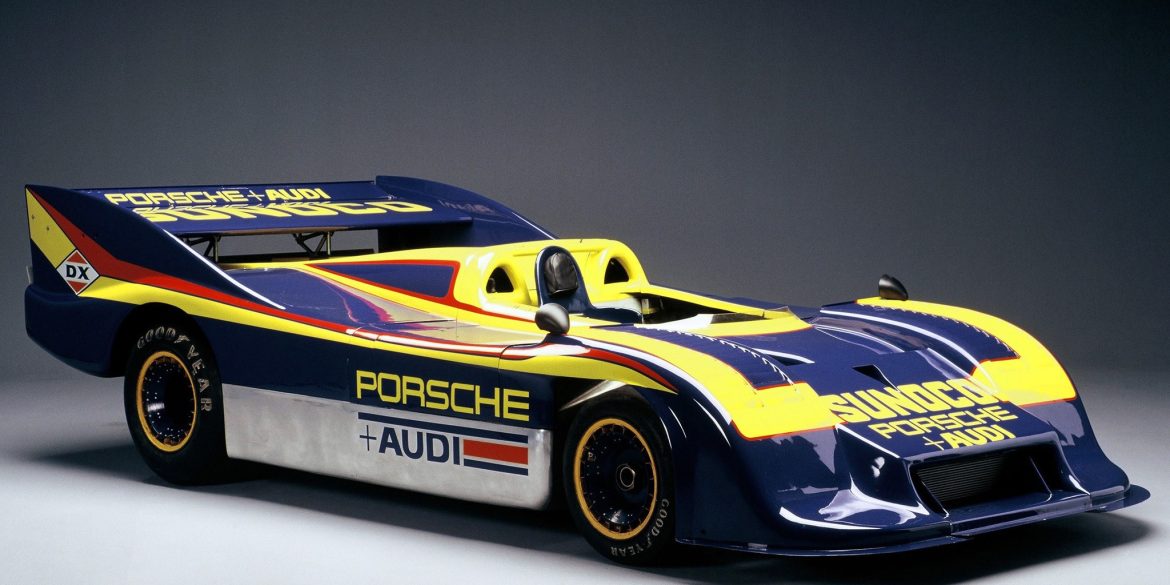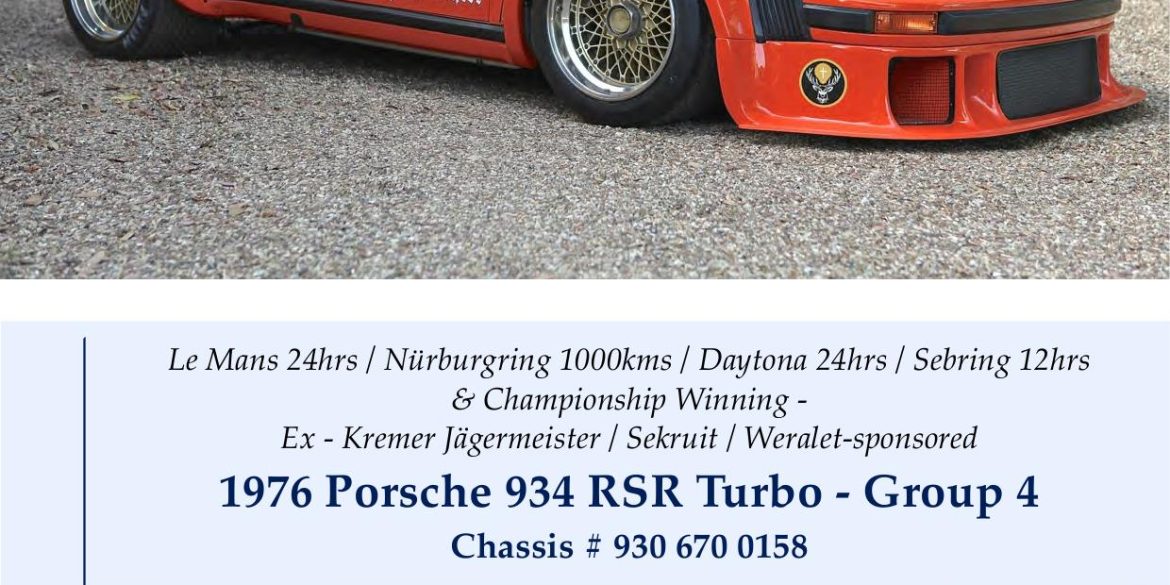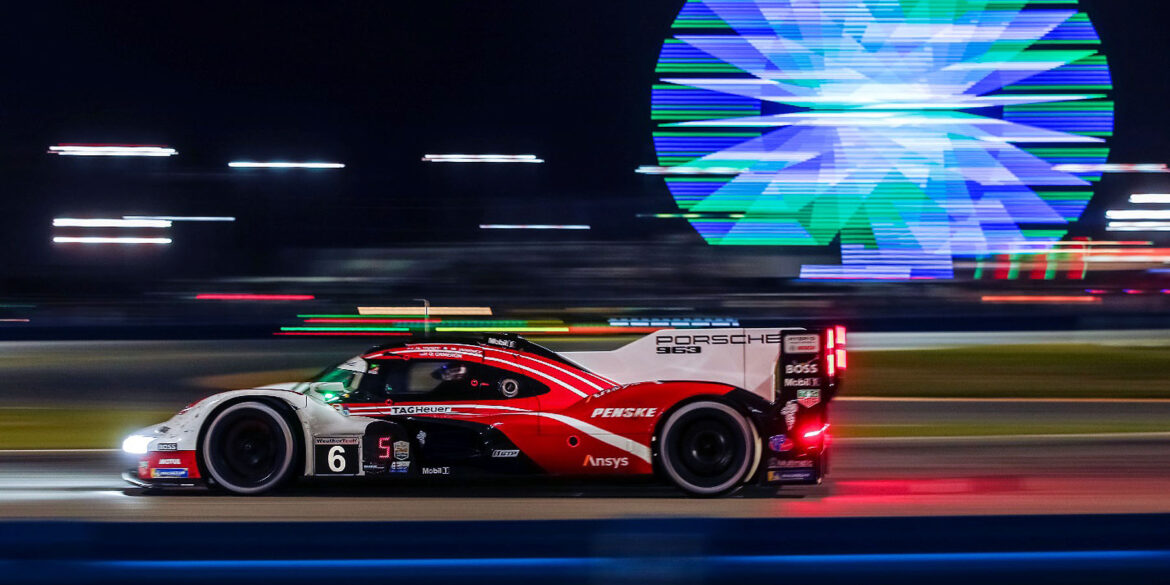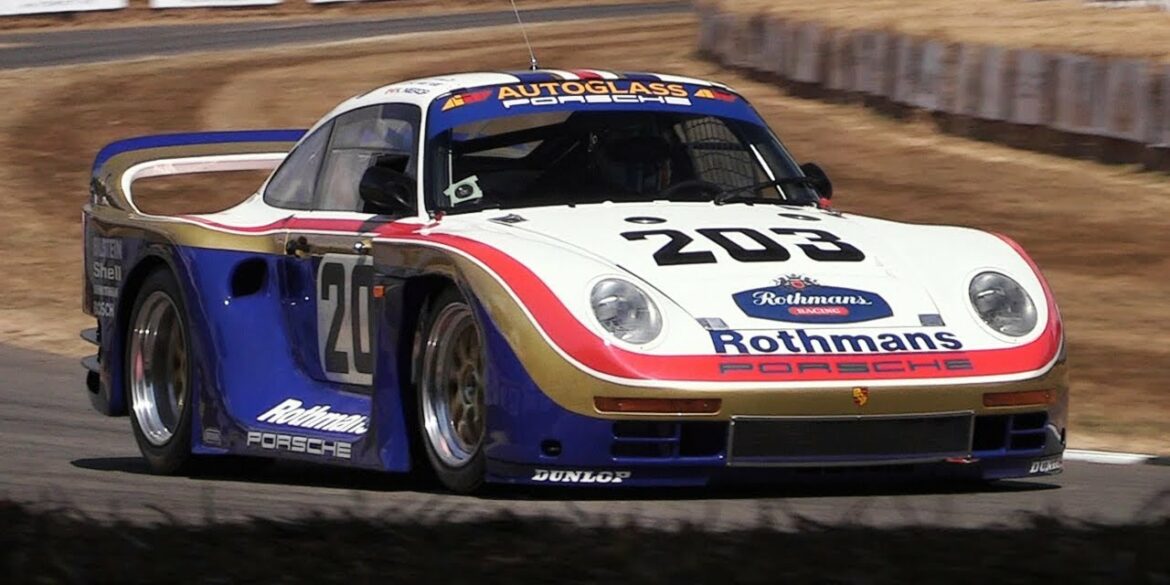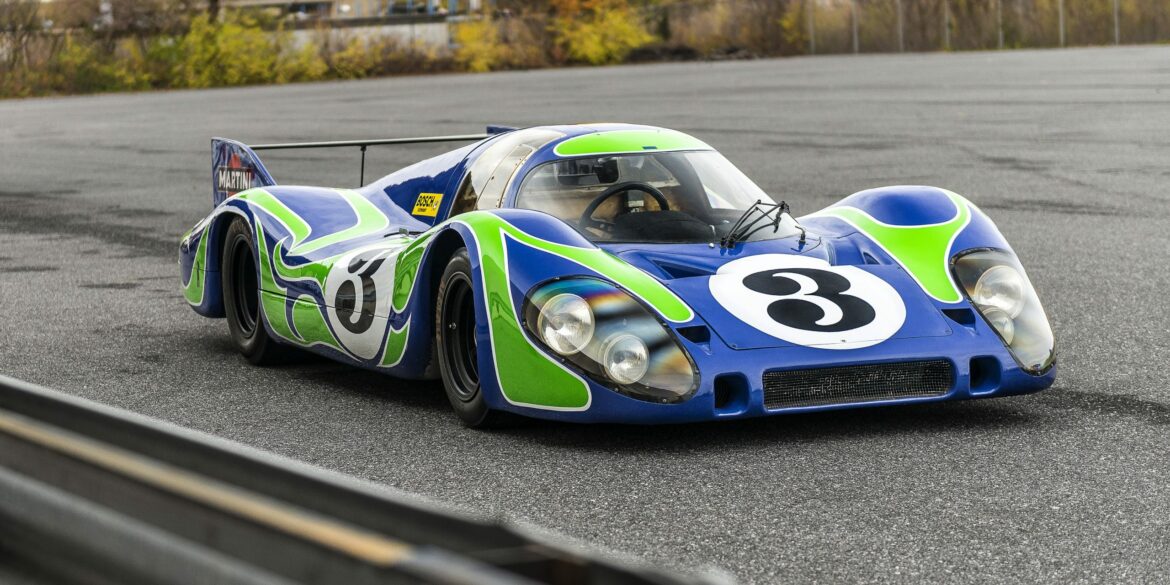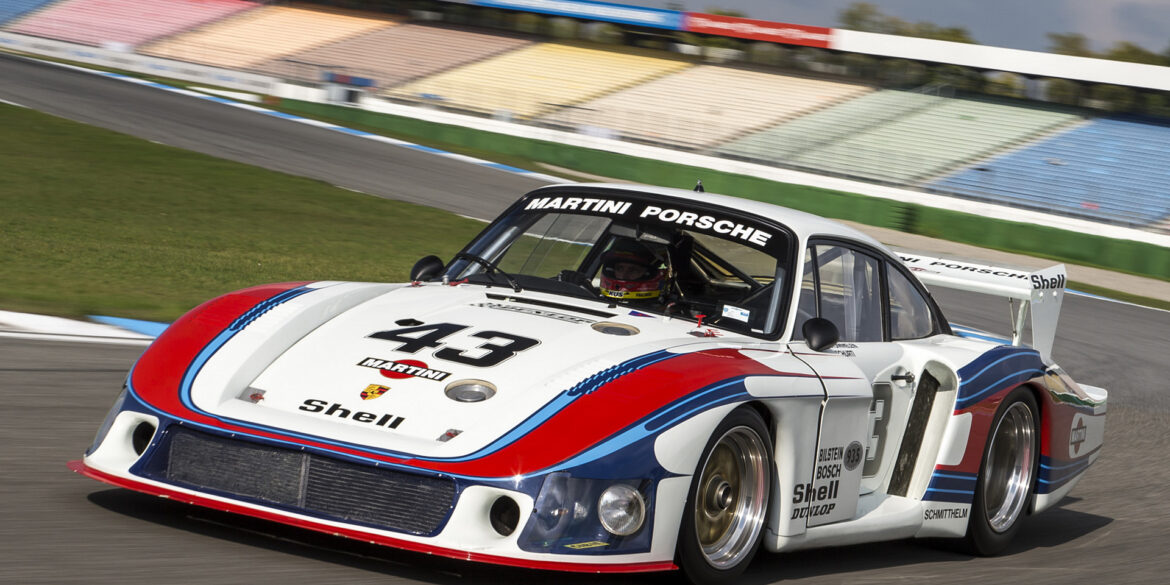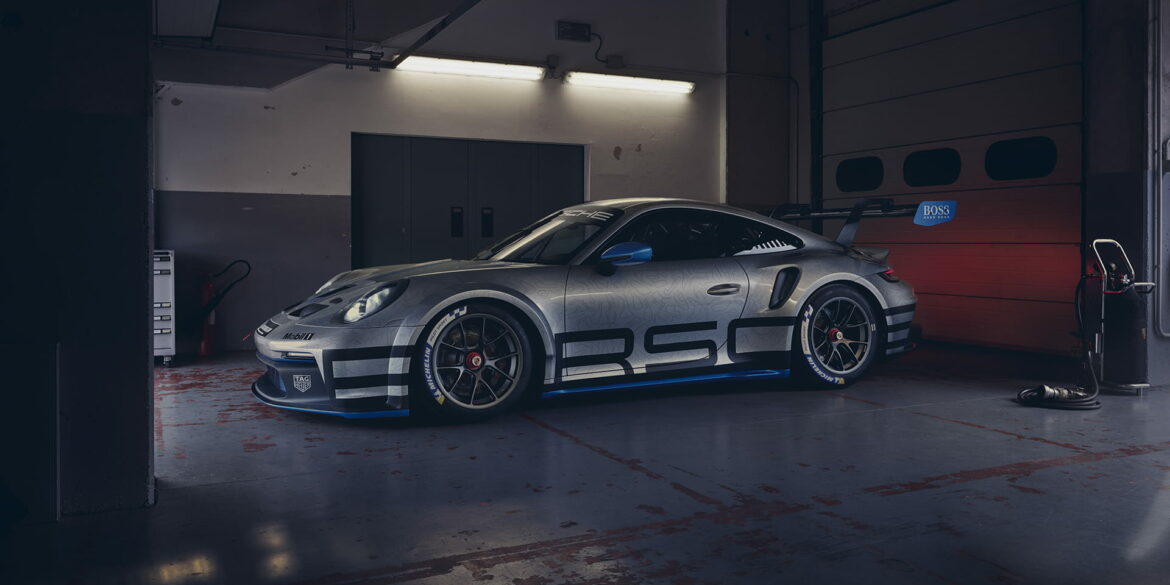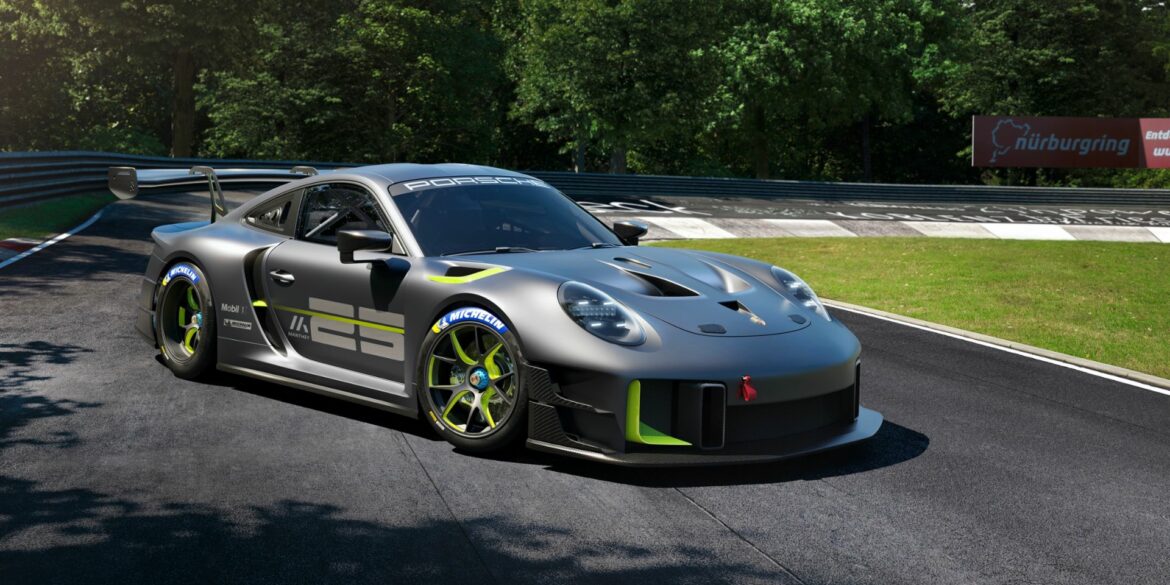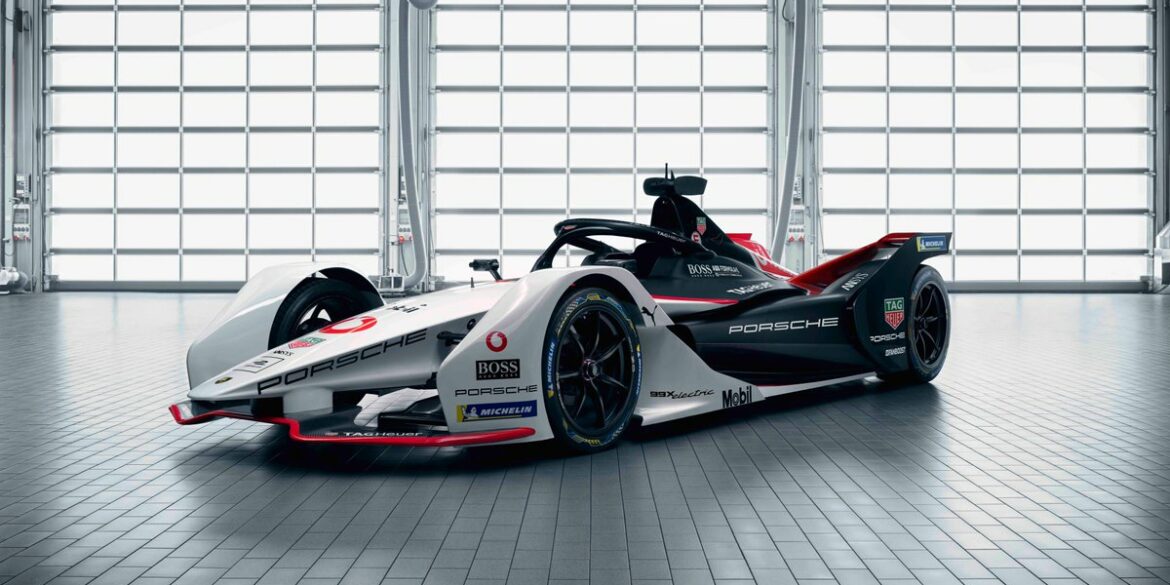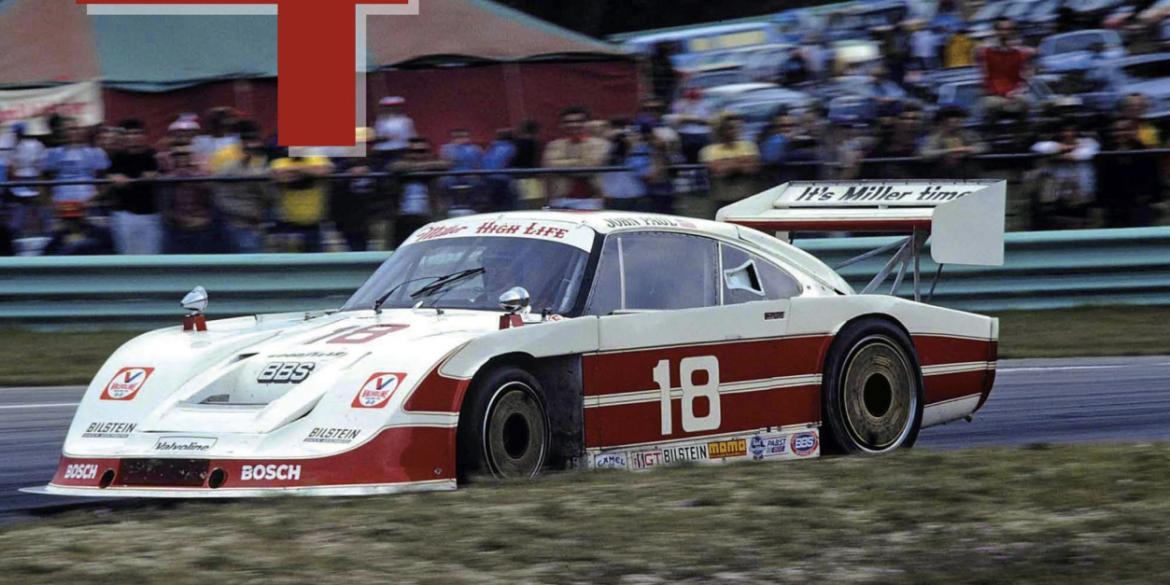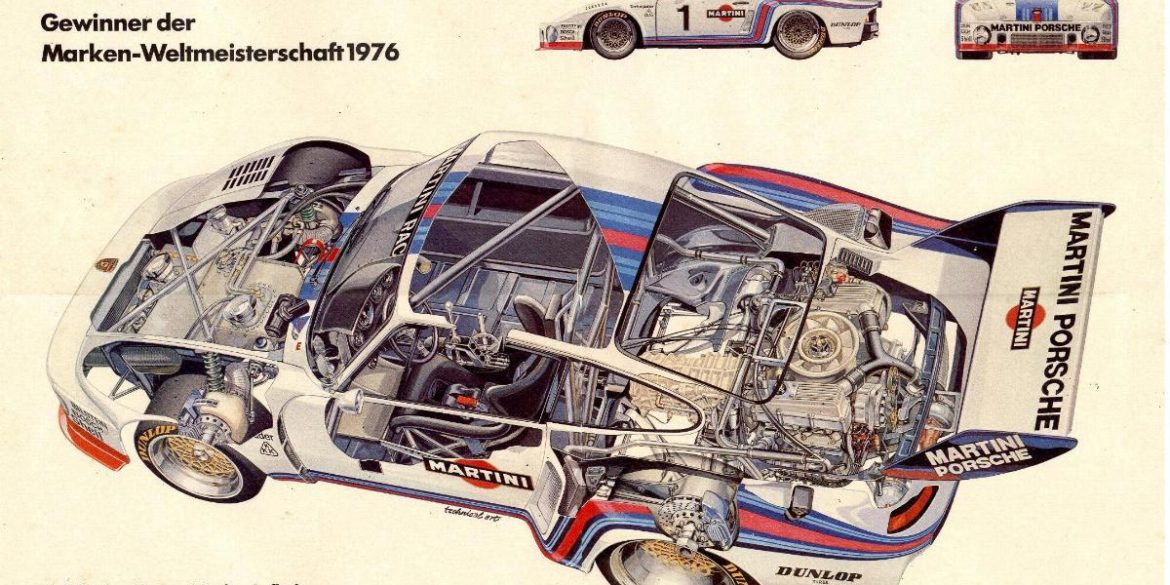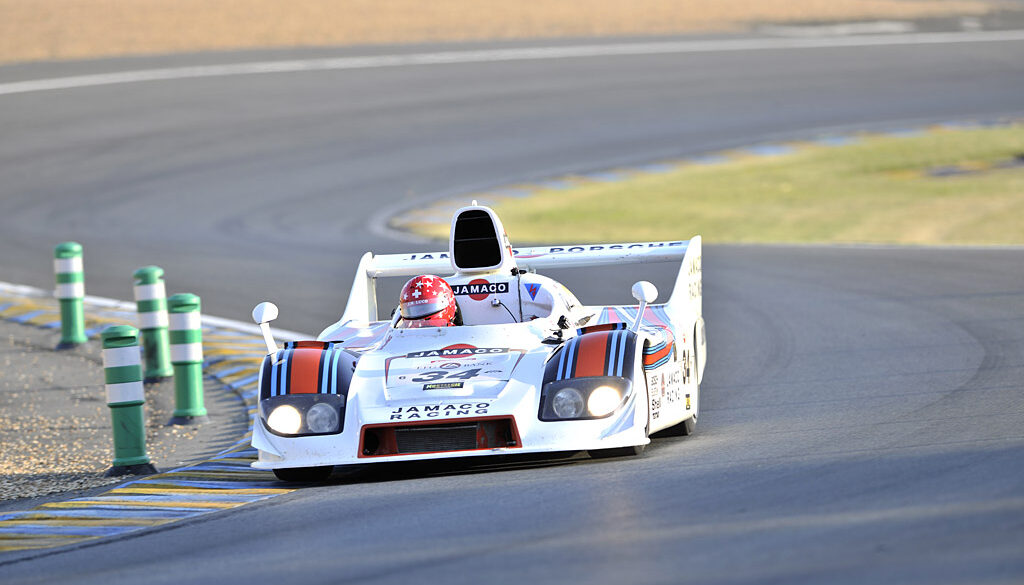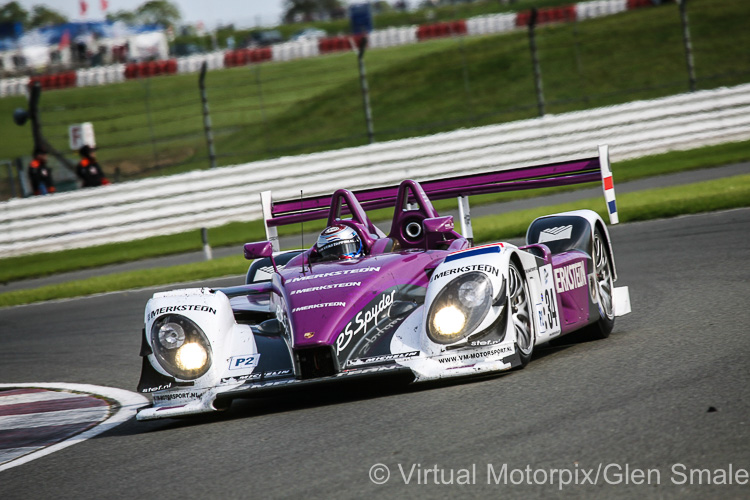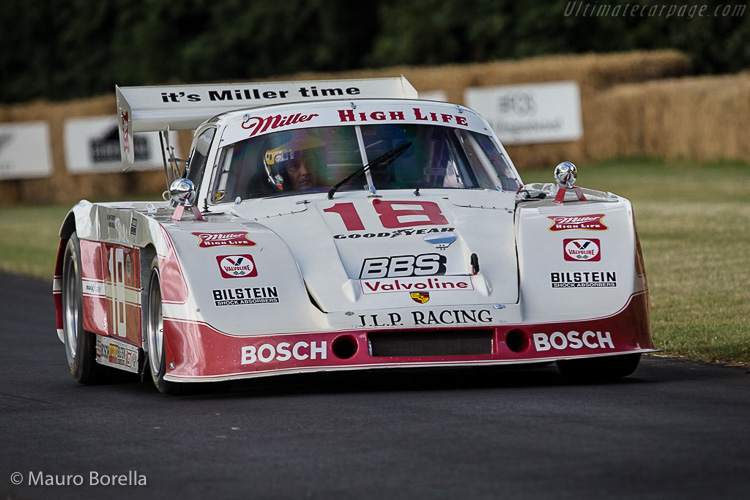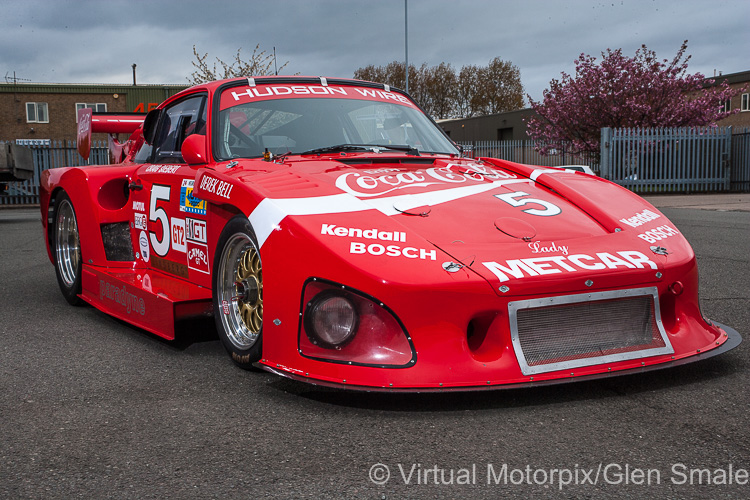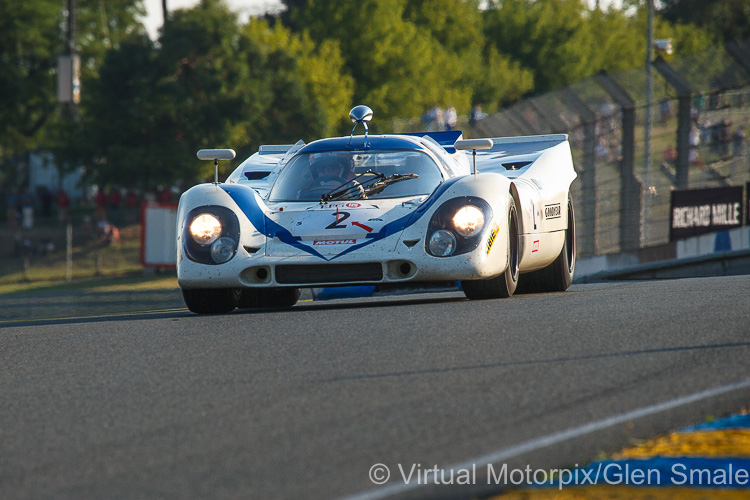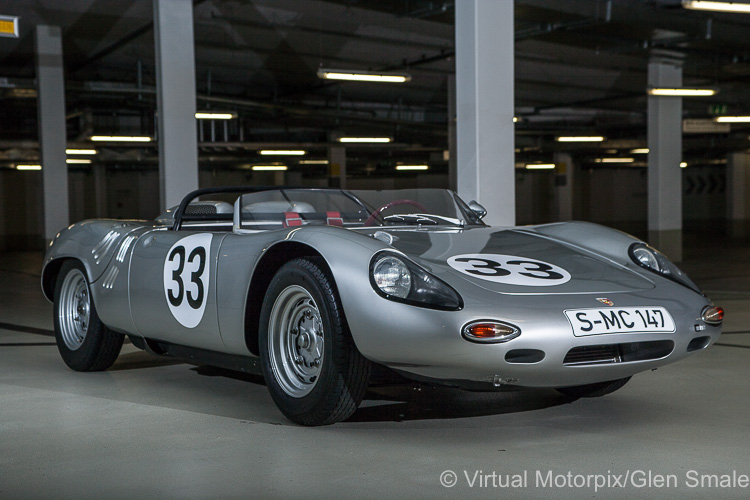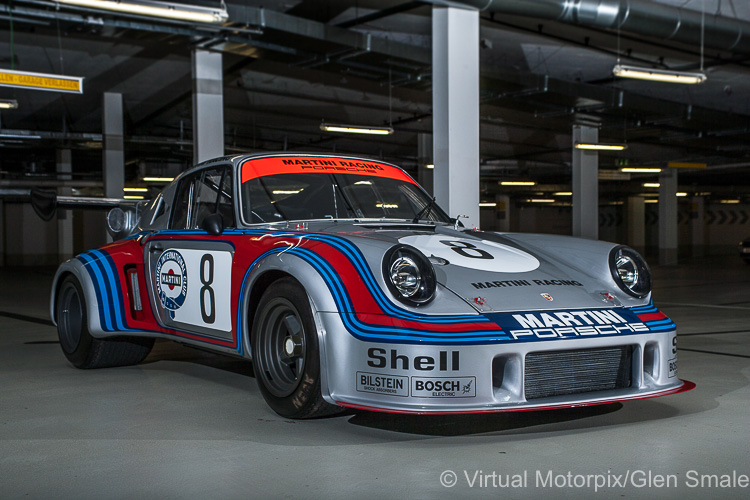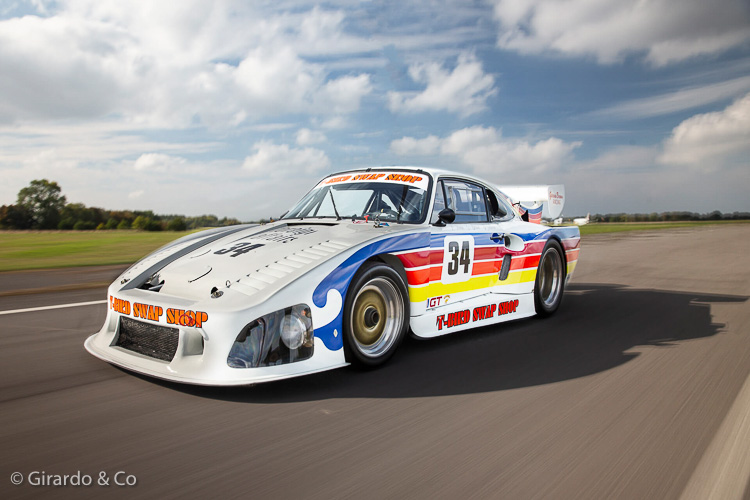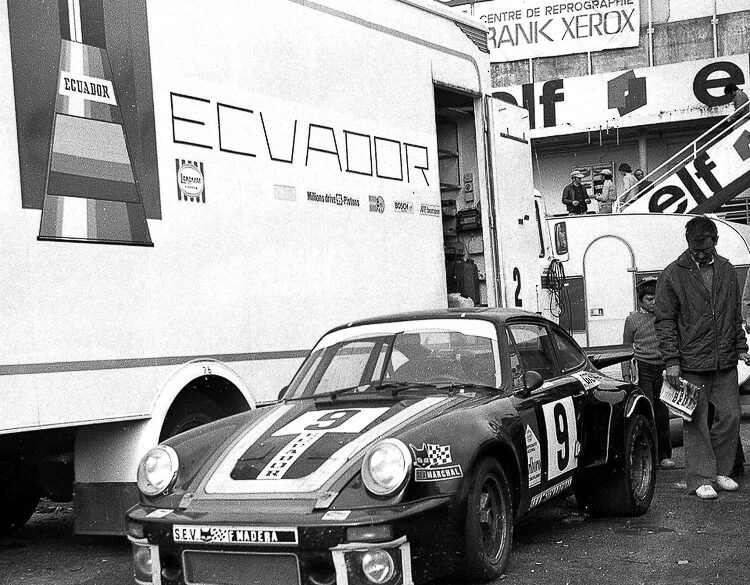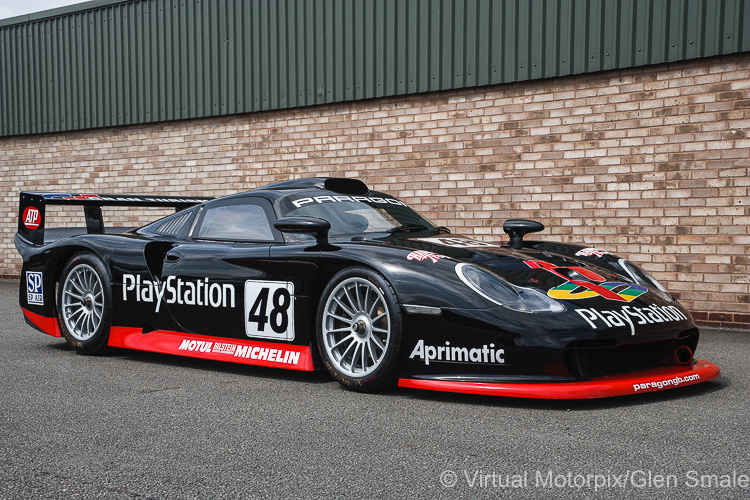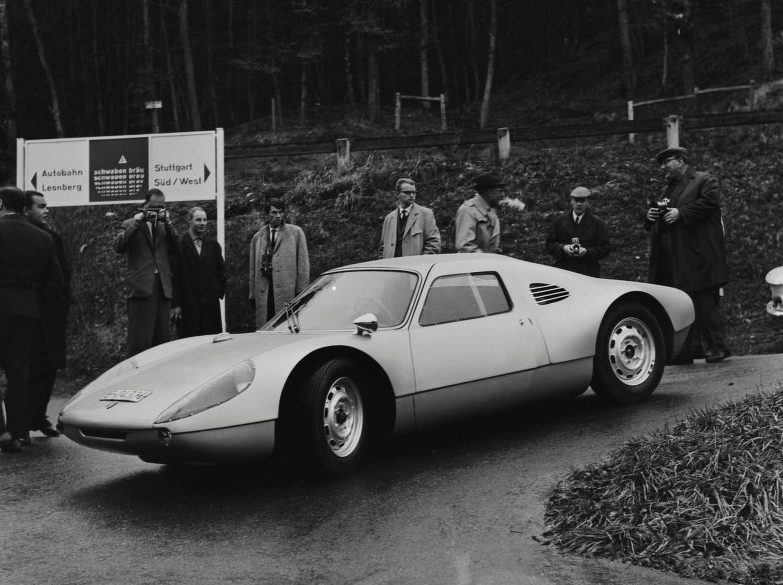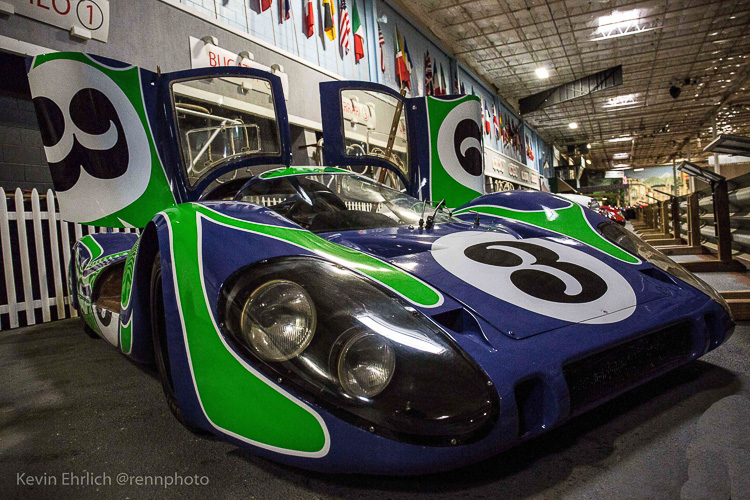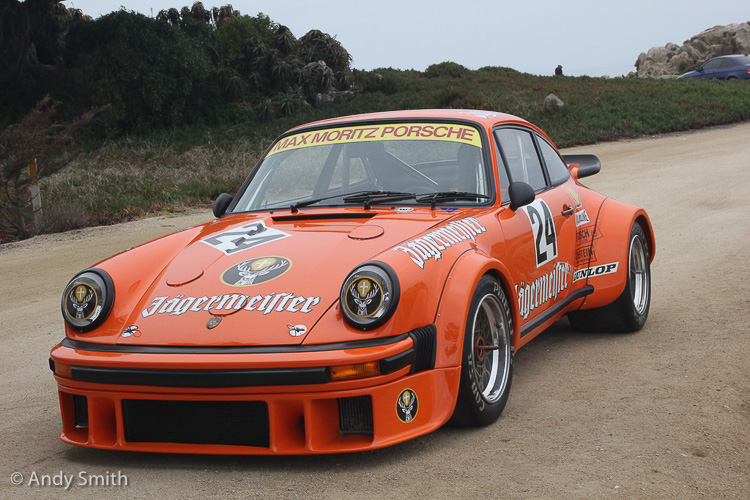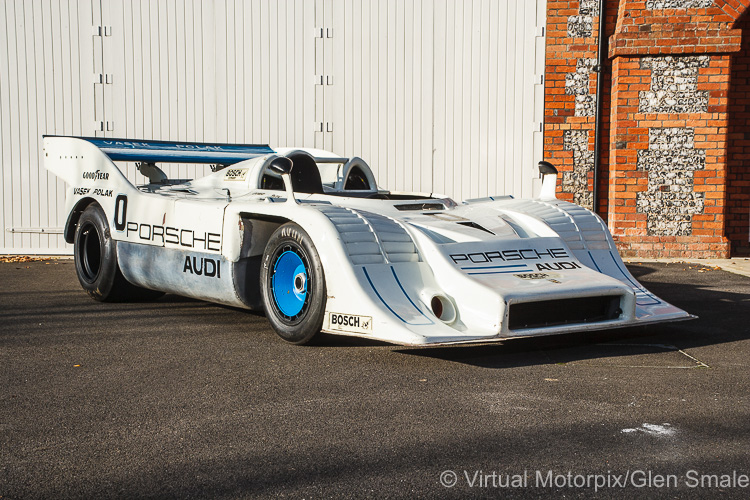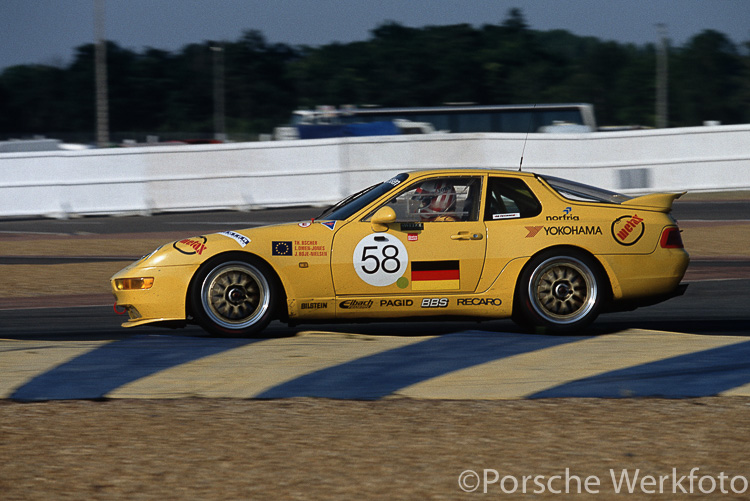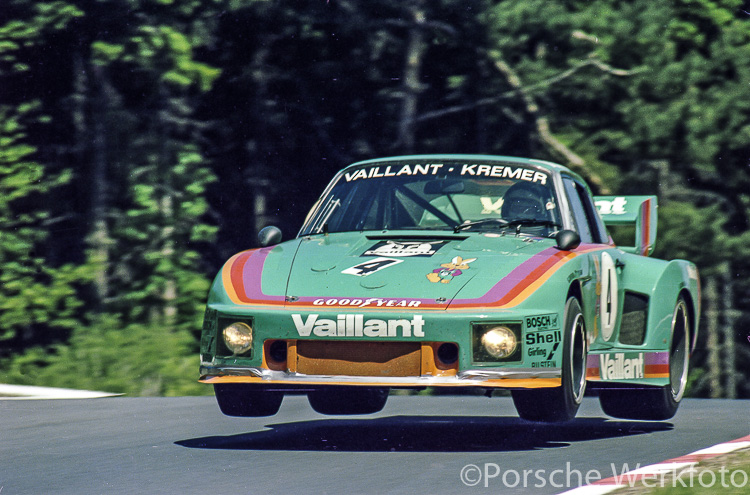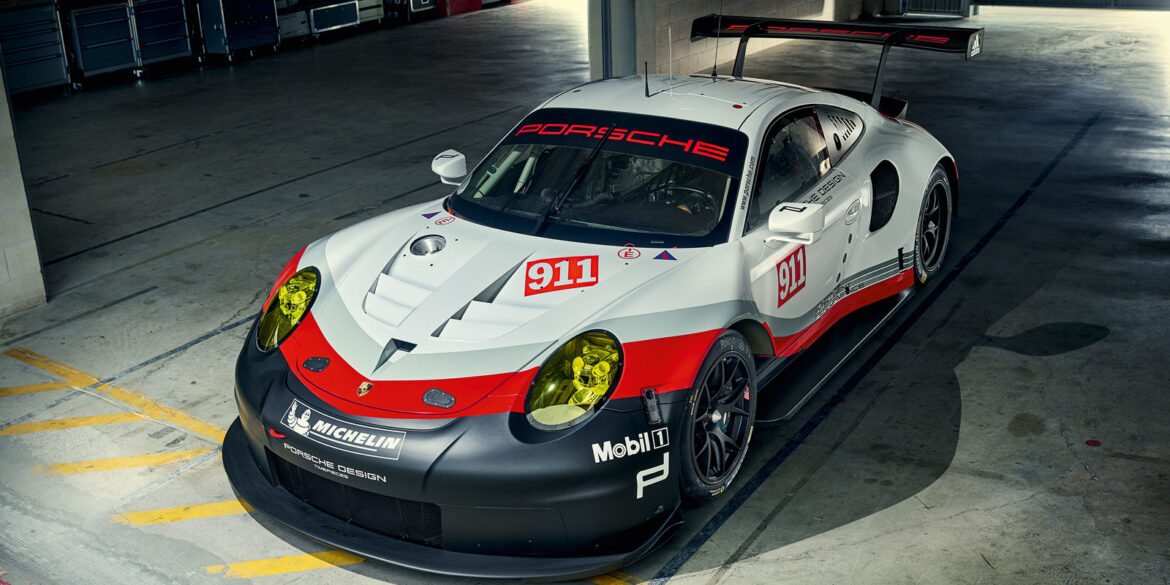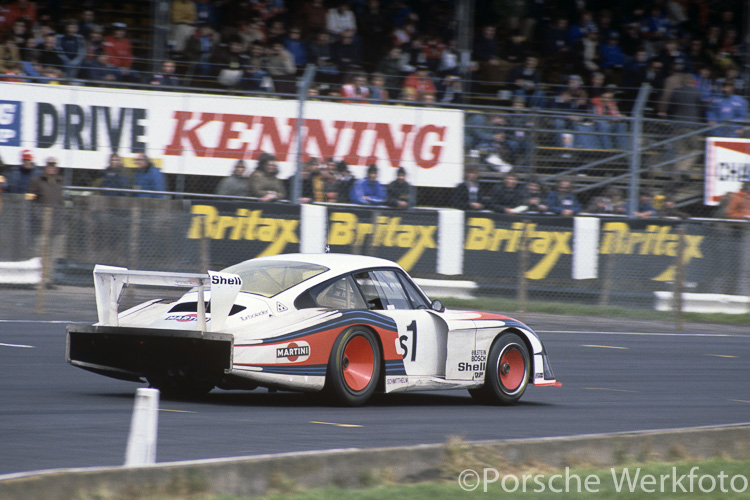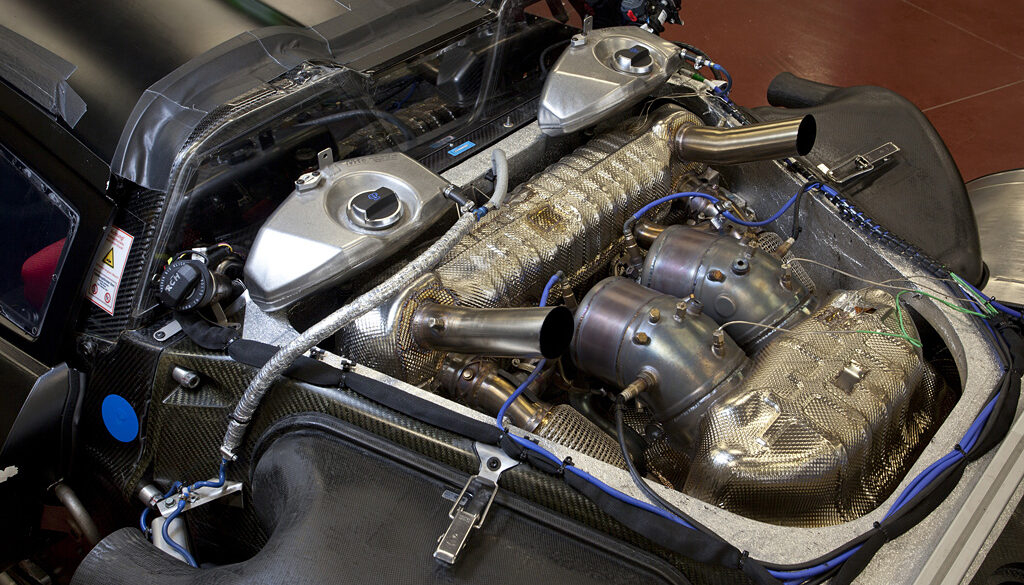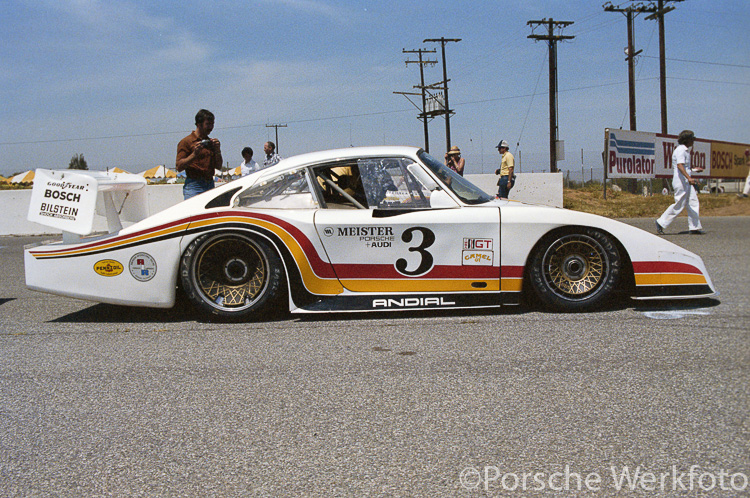Some cars demand respect, and the Porsche 962 is one of them. This legendary race car dominated endurance racing in the mid-to-late 1980s. It was so successful that the FIA eventually banned it from competition, leaving many 962 race cars without a home. Around that time, a few tuners saw...
Few race cars have left as lasting an impact as the 1966 Porsche 906, also known as the Carrera 6. Built as Porsche’s answer to the competitive world of endurance racing, the 906 combined lightweight engineering, aerodynamic efficiency, and pure performance, making it a dominant force on the track. Today,...
No Subscription? You’re missing out Get immediate ad-free access to all our premium content. Get Started Already a Member? Sign in to your account here....
No Subscription? You’re missing out Get immediate ad-free access to all our premium content. Get Started Already a Member? Sign in to your account here....
No Subscription? You’re missing out Get immediate ad-free access to all our premium content. Get Started Already a Member? Sign in to your account here....
No Subscription? You’re missing out Get immediate ad-free access to all our premium content. Get Started Already a Member? Sign in to your account here....
In the late 1970s, while Porsche’s 935 was dominating GT racing, the Kremer brothers, Manfred and Erwin, believed they could enhance the factory cars. Operating a Porsche dealership, Erwin raced Porsches tuned by Manfred. By 1977, Manfred began extensively modifying the cars, producing the 935 K2 in 1978, which rivaled...
From 1977 through the 1980s, Porsche 935s dominated Group 5, GTP, and GTX racing across Europe and North America. With later versions crafted by Kremer, Joest, Gaaco, and Fabcar, Porsche’s supremacy faced little opposition. This effort culminated in a historic overall win at the 1979 24 Hours of Le Mans....
The 1961 Porsche RS was one of the last Spyders made by Porsche that used the potent 4-cam engine. It was a successor to the 1960 RS60 which was a highly developed version of the original 550 RS Spyder. These diminutive racecars excelled on the tighter courses like the Targa Florio which was...
Few race cars are as universally acclaimed as the Porsche 956. The car is a brilliantly engineered aesthetic wonder, born of another round of FISA changes that ultimately resulted in the emergence of several marque innovations. Before the debut of the Porsche 956, there were the 935 and 936 prototypes...
Background Ferdinand Piëch, a grandson of Dr. Ferdinand Porsche, joined Porsche in 1963, determined to elevate his family’s firm to prominence on the international racing scene. When substantial changes to the FIA regulations for 1966 created additional opportunities for Porsche, Piëch and Helmuth Bott set out to build an entirely...
The successor to the 550 A made its debut in 1957 as the 718 RSK. Motorsport and technology were closely intertwined in its name. While the “RS” stands for “race sport”, the “K” referred to the newly developed front torsion bar springs. They were arranged in the form of a...
Porsche’s 956 was a revolutionary force in endurance racing. Introduced in the early 1980s to compete in the new Group C category, the 956 represented a leap forward in technology and performance. Its aluminum monocoque chassis and advanced aerodynamics were unparalleled at the time, providing exceptional rigidity and downforce. Powered...
Automakers often tout their “racing heritage” influencing production vehicles, but Porsche truly exemplifies this. Porsche began racing with the lightweight 356, but their reputation soared with the “giant killer” 550 Spyder. Throughout the mid-1960s, Porsche focused on race cars like the 550, 718, RS, and RSK models. They expanded their...
Despite being made for the small engine displacement classes, Porsche nearly won the 1960 Manufacturers Championship with the RS 60. These purposeful racers featured 1.5, 1.6 or 1.7 liter engines in a low and lightweight chassis. They always won the 1.6 liter class, but typically raced in and among the...
The Porsche 962 arrived on scene in 1984 as essentially a Porsche 956 for the IMSA/US market. IMSA mandated that the driver’s feet had to be behind the front wheel centerline. Therefore Porsche needed to change the 956 to accommodate this difference and ultimately that meant redesigning the monocoque and giving the car...
Developed for endurance sports car racing, the 906 was a street-legal racing car that raced in the FIA’s Group 4 class against cars like the Ferrari Dino 206 P. On the basis of the “Ollon Villars Bergspyder”, Porsche developed the type 906 Carrera, which was soon only referred to as...
The Porsche 908/3 is undeniably a unique car. Specifically crafted by Porsche for competition on only two circuits during the 1970 and 1971 World Sportscar Championship seasons—the Targa Florio and the Nürburgring Nordschleife—its lightweight design was revolutionary yet maintained exceptional weight distribution. Powered by a reliable and potent eight-cylinder flat...
The Porsche 962 (also known as the 962C in its Group C form) was built by Porsche as a replacement for the 956 and designed mainly to comply with these IMSA’s GTP regulations. The 962 was introduced at the end of 1984, from which it quickly became successful through private...
The 908/3 prototype was built for the sole purpose of winning the Targa Florio and Nürburgring legs of the world Championship. The 908 specialized in lightweight design through the use of a 48 lbs titanium space frame and 26 lbs body. Known as the Porche miracle by Italians, the 908/3s won...
Watch this onboard video featuring the 1986 Le Mans 24 Hours-winning Porsche 962 hustled around the Laguna Seca during a qualifying session....
The 934, introduced for the 1976 racing season, utilized the production 930 as its foundation. It incorporated a front spoiler to house a sizable center-mounted oil cooler, along with air and brake cooling intakes. To meet the FIA Group 4’s 2,470-pound weight requirement, the car retained production-based components like door...
The 903/3 prototype was built for the sole purpose of winning the Targa Florio and Nürburgring legs of the world Championship. The 908 specialized in lightweight design through the use of a 48 lbs titanium space frame and 26 lbs body. Known as the Porche miracle by Italians, the 908/3s won the...
No Subscription? You’re missing out Get immediate ad-free access to all our premium content. Get Started Already a Member? Sign in to your account here....
Despite being made for the small engine displacement classes, Porsche nearly won the 1960 Manufacturers Championship with the RS 60. These purposeful racers featured 1.5, 1.6 or 1.7 liter engines in a low and lightweight chassis. They always won the 1.6 liter class, but typically raced in and among the...
This 1982 Porsche DP 935 was specifically commissioned by a Porsche engineer for a feature in “Car and Driver” magazine, penned by Csaba Csere, in the publication’s 1984 Buyer Guide titled “DP 935 Fantasies Fulfilled: No Waiting.” The details of the build are substantiated by a confirmation letter from DP...
After claiming two Le Mans victories with the iconic 917 Kurzheck, Porsche’s Weissach engineers converted it into a Group 7 contender by 1973, boasting over 1000 bhp. The result was the L&M Porsche+Audi 917/10, driven by George Follmer and backed by Penske, which triumphed in the 1972 Can-Am Championship, outshining...
The origins of this 1989 Porsche DP 935 Long Windshield lie in the iconic 935 race car, a dominant force in FIA Group 5 racing in Europe and IMSA GTP racing in the USA. The late 1980s embraced excess and indulgence, a sentiment embodied by this Porsche. The carbon Kevlar 935...
The ultimate expression of CanAm’s unique sky’s-the-limit approach to technical regulations, this 1200bhp twin-turbo monster was a sensation, rubbing salt into the opposition’s wounds by totally dominating the 1973 season after its predecessor. The Porsche 917/30 was a derivative of the 917/10 and it was the first real turbocharged racing car developed to...
No Subscription? You’re missing out Get immediate ad-free access to all our premium content. Get Started Already a Member? Sign in to your account here....
The Porsche 962 arrived on scene in 1984 as essentially a Porsche 956 for the IMSA/US market. IMSA mandated that the driver’s feet had to be behind the front wheel centerline. Therefore Porsche needed to change the 956 to accommodate this difference and ultimately that meant redesigning the monocoque and giving...
Ben Collins, a British racing driver, get’s the chance to drive one of the most iconic cars to ever race at Le Mans – the Rothmans Porsche 962! This 962 C, chassis number 004, is one of the three Works cars assigned to the Rothmans Porsche factory team for the...
Porsche’s Type 904 was officially called the Carrera GTS because Porsche and Peugeot were still in their bitter disagreement over numeric designations with “0” in them. The Porsche 904 succeeded the RSK Type 718 as the last sports-racing iteration of the 356 series. It was also the last full-competition Porsche...
No Subscription? You’re missing out Get immediate ad-free access to all our premium content. Get Started Already a Member? Sign in to your account here....
THE HISTORY The Porsche 963 follows on from a long line of successful cars and racing successes. Porsche 963 , #7 at Daytona during the ROAR test session entering Daytona Turn 6. Photo: Copyright Martin Raffauf Ferdinand Porsche started the company bearing his name in 1949. Almost immediately they started...
Watch as Bruce Canepa gets behind the wheel of a 1969 Porsche 917K with chassis number 917-015 around the famous Laguna Seca along with other historic race cars....
In 1977 Kremer sufficiently improved the 935 to begin series production of their own version. It was the third Kremer built on Porsche’s successful platform and many 935/934s were updated to reflect ideas from the brothers in Cologne. The K3 version of their 935 was a great success and won...
Historic liveries recall rally milestones. Edited by Rex McAfee Porsche to offer three exclusive wraps with designs inspired by the East African Safari Rally. The rally history of the Porsche 911, well away from paved roads, began before the first victory in the Paris-Dakar Rally in 1984. Early forays in...
Edited by Rex McAfee, Photos © Canepa A Legend is Born: When something great comes along, people scramble at every opportunity to be a part of it, and the Porsche 962 in IMSA was no exception. With approximately 16 total Porsche factory-built IMSA-spec customer cars delivered, it’s easy to say...
The Porsche 961 was the racing version of the 959 supercar. While the 959 rallye car was also internally called 961, publicly only the circuit racer was called 961. Only one 961 was built. It had 959 prototype chassis number which in turn was from the 1985 911 Turbo chassis number...
With the aerodynamic instability of the 917 in the 1969, two separate configurations were used in 1970. These were the short-tail Kurzheck version and the less common Langheck or long-tail. Most of the 917’s accolades were achieved by the 917 Kurzheck, leaving the Langheck a less popular, but ultimately just...
Have you seen a Porsche 917 in action outside of Le Mans? If not, you’re in for a treat as YouTube channel, 19Bozzy92, filmed a Porsche 917 bearing the chassis number 025 racing at the Monza Circuit....
The 935/78 was the ultimate expression of the 911 factory race car before Porsche officially withdrew from motor sport. Raced under the Group 5 silhouette series, great liberties were taken with the design and the result was nicknamed ‘Moby Dick’ for its large size and huge overhangs. Only one 935/78...
A few years ago, an unlikely vehicle listing appeared online by Cartique – a luxury car dealer from Germany. The listing in question is for a 1979 Porsche 935 Kremer K3. Today, we are sharing it with you all as our car of the day. Porsche revived the iconic 935...
After bodywork testing with the prototype 934, 930 670 0001, the Porsche factory built its first 935 to actually race at the end of 1975. This was known internally as 935-001, or R15. The Chassis number was 930 670 0002. The engine had a bore and stroke of 92.8 x...
Sports car racing went through some turbulent times in the early 1970’s. At the start (1970) the world championship was decided by the 5.0 liter sports cars such as the Porsche 917 and the Ferrari 512. The FIA /CSI (International rules body) at first did not think anyone would build...
The 917 Kurzheck Coupé (917K) first appeared in 1970 and contributed more to the Porsche 917 story than any other variant. It was a high-down force version that featured a cut-off tail for increased downforce. This reduced the cars top speed, as much as 30 mph, but it helped the Porsche win...
Porsche 963 LMDh – Reviews, Pricing, Specs & Buyers Guide Porsche’s first customer prototype in more than a decade comes with a $2.9 million price tag, making the 963 the most expensive model offered by the German auto manufacturer. Built by Canadian racecar constructor Multimatic, the LMP2-derived 963 chassis could become...
There are 935s, and then there are 935s… Although almost a hundred Porsche 935s were built between 1975 and 1984, with the factory building some forty two cars and customers building the remainder, JLP-4 was by far the most radical of the Group 5 breed. No Subscription? You’re missing out...
Endurance racing legend Brian Redman is once again hosting Targa Sixty Six, a vintage race car gathering he founded in 1991 where owners can “properly exercise” their sleek machinery in a controlled atmosphere. This year’s event will be held from February 11-13 at the 10-turn Palm Beach International Raceway just...
The Porsche Mobil 1 Supercup features the Porsche 911 GT3 Cup, the world’s best-selling race car. For this season, it’s the new generation. 510 hp, optimised intake manifold, electronic gearshift and power steering, fully digital cockpit, larger rear wing, and a double-wishbone front axle. This is a meaningfully upgraded race car. The new 911 GT3 Cup is taking on a great legacy. And it has already proven itself!
In 1977, to participate in the SCCA Trans-Am championship, American pilot Monte Shelton and, concurrently, owner of Monte’s Motors Co. (it still exists today and sells cars), purchased a used 934/5 from Jim Busby. No Subscription? You’re missing out Get immediate ad-free access to all our premium content. Get Started...
Porsche will only build 30 examples of the Clubsport 25. Mechanically, it's similar to the regular GT2 RS Clubsport. It makes the 691 horsepower from a twin-turbocharged 3.8-liter flat-six. But it gets many, many changes to the exterior and even the cooling system. As you can clearly see, the body has been lengthened, and it has also been widened. The latter is necessary to house the wide, low-offset 18-inch wheels taken from the Porsche 935, though without the aerodynamic covers.
The silhouette is familiar. With weaves of carbon fiber covering almost every external surface, the Porsche 935/19 cuts an unmistakable shape. Like a black hole, it absorbs light and emits it judiciously. No chrome bits compete for attention. The car has presence. It has a sense of occasion. It is...
Spark Racing Technology is responsible for a big part of the Porsche 99X Electric. This is the racing car Porsche fielded in Formula E 2019 season. Maximum performance in qualifying mode? 335 horsepower and 174 mph. Zero to 100 kilometers per hour is doable in 2.8 seconds, and the minimum weight including the driver is rated at 900 kilograms of which the battery is responsible for 385 kilograms. In race and attack modes, the output is restricted to 272 and 320 PS, respectively. The useable battery capacity is 52 kWh while maximum recuperation is rated at 250 kW.
No Subscription? You’re missing out Get immediate ad-free access to all our premium content. Get Started Already a Member? Sign in to your account here....
No Subscription? You’re missing out Get immediate ad-free access to all our premium content. Get Started Already a Member? Sign in to your account here....
Porsche’s Type 904, officially called the Carrera GTS because Porsche and Peugeot were in dispute over numeric designations with “0” in them, succeeded the RSK Type 718 as the last sports-racing iteration of the 356 series. Developed after Porsche left Formula One in 1962, the 904 (as it soon became popularly known) was also the last full-competition Porsche that could be readily driven on the street. This is the full story.
Porsche 550 (1953-1956) Introduction Porsche needed a race car to compete in the roadster class, and that’s just what the 550 Spyder did at a time when production cars could no longer win. In fact, the third 550 prototype and first 550 to race won its first event at the...
Porsche 936/81 Pictures...
1966 Porsche 911 2.0-litre – GVB 911D – parked on track at Lodge Corner after practice for the Oulton Park Gold Cup on 24 August 2013 Originally a showroom demonstrator, this 911 set the market buzzing, winning the UK’s inaugural rallycross and the British Saloon Car Championship in 1967 in...
ACO Museum, Le Mans 16 September 2020: As it was the 50th anniversary of Porsche’s first win at Le Mans, a special display was set up featuring several of Porsche’s winning cars In 1971 the first ever Starbucks coffee house was opened in Seattle, Washington. That same year, the fourth...
Molly ready for the Peking to Paris rally in 2007 © David & Julie Harrison She was manufactured in 1958, and much of her early life is unrecorded. But in 2004, a customer of Gantspeed Engineering, Lincolnshire, England, asked the workshop’s owner, Robert Gant, to find him a right-hand drive...
Porsche 904/8 (chassis #008) photographed in the Porsche Museum, September 2020 F.A. ‘Butzi’ Porsche, the eldest son of Ferry and Dorothea Porsche, joined the family business in 1958 having shown great interest in the field of industrial design. Working under the direction of Erwin Komenda, F.A. Porsche set about learning...
Daytona 24 Hours, 4-5 February 1984: Sarel van der Merwe, Graham Duxbury and Tony Martin drove a fine race to bring the #00 Kreepy Krauly March-Porsche 83G/04 home in first place overall, nine laps ahead of the second-placed car Although it is not widely known, one of the most successful...
Autosport 1000 km, Silverstone, 14 September 2008: In the fifth and final round of the 2008 Le Mans Series season, the #34 Porsche RS Spyder was driven by Peter Van Merksteijn and Jos Verstappen and finished first in the LMP2 class and fifth overall, ahead of a brace of LMP1...
Porsche 935 JLP-4 at the Goodwood Festival of Speed, 2014 JLP-4 was the final race car in the line of Porsche 935 specials built for the John Paul father and son team. Using this final ‘weapon’, the Pauls notched up several outright victories in IMSA races and, in combination with...
The GT3 R has always been placed between the GT3 Cup and the very expensive RSR. All the 991.2 racing cars have normally aspirated 4-litre engines. Compared to the 991.1 GT3 R, the 991.2 GT3 R engine offers a broader usable rev range and the engine response is more precise due to 6 throttle butterflies. The roof, front hood and fairing, wheel arches, doors, side and tail sections, rear lid and interior trim are made of carbon-fibre reinforced plastic. Gets new double wishbone suspension.
This was the fourth version of the 991 RSR - the first two came with the rear engine, then the first mid-engine version was launched (all 4.0-litre) and finally the mid-engined RSR 4.2 with the largest 911 engine ever made. The increase in the engine capacity is a question mark as on production models the capacities are decreased and turbochargers are used. The 991 RSR 4.2 didn't have anything in common with the production cars anymore. No change in terms of power-to-weight ratio.
1979 Porsche 935 chassis #009 0004 – Willow Springs International Raceway © Robert Graham Junior The phone rang, it was my old friend Carlos de Quesada. “I’ve just bought a 935 to restore,” he told me. “Great,” I replied, “which one?” “#009 0004,” announced Carlos. Chassis #009 0004? I had...
Kremer Porsche 935 K3/80 (chassis #0013) In the mid-70s, Porsche developed the 935 model, a race car homologated on the 930 road car and aimed at the Group 5 ‘silhouette’ series created by the FIA for the 1976 season. As the records will show, the 935 was a formidable race...
Last weekend, we would have been at the Le Mans Classic had the coronavirus pandemic not intervened. Now, thanks to this global medical crisis, all sports and major events involving large public gatherings have had to be either cancelled or postponed. One of our favourite historic race car meetings, the...
1981 Porsche Kremer 935 K4 – chassis #K4-01 In the mid-1970s, Porsche developed the 911 for racing, and in the process, it created the all-conquering 935. In 1978, Norbert Singer was responsible for building the ultimate factory 935, the Moby Dick 935/78, and although this race car had a very...
1961 Porsche 718 W-RS Spyder ‘Grossmutter’ (chassis #047) photographed at the Porsche Museum, May 2019 The word unique is a much-overused word today, as it is applied, it seems, to just about anything that is produced in small numbers, or even just to enhance a claim about something unusual. In...
1974 Porsche 911 Carrera RSR Turbo 2.1 (chassis #911 460 9101) photographed at the Porsche Museum, Stuttgart, Germany, May 2019 The year 1974 will be remembered for many different reasons, depending on where you were living in the world at the time and what caught your eye. For instance, Richard...
Kremer Porsche 935 K3 – chassis #930 890 0021 The Porsche 935 was the Stuttgart manufacturer’s answer to the FIA’s Group 5 class regulations, making it eligible for the World Championship of Makes. The first Porsche car in this so-called ‘Silhouette’ series, was introduced for the start of the 1976...
Lined up in the pit lane before the 1994 Le Mans 24-Hours, is from the left: #36 962 Dauer Le Mans GT driven by Mauri Baldi, Yannick Dalmas and Hurley Haywood; centre is the street-legal 962 Dauer with rather appropriate Boeblingen region (Weissach) registration plate ‘P 962’; on the right...
Le Mans 24 Hours, 14-15 June 1975: Porsche 9083 in the paddock ahead of the race (copyright Yves Ronga) When I’m not helping to sell the occasional old race car, or visiting old race car meetings, I’ve usually got my head down, researching various projects for clients, usually to do...
Le Mans 24 Hours, 16-17 June 2007: Busy grid just before the start of the race Porsche introduced their new 3.8-litre 911 GT3 RSR (Type 997) for the 2007 season, replacing the 3.6-litre 996 GT3 RSR. In many ways, this new model was a better all-round race car, being more...
Improving a Car That’s Already Excellent The Porsche 911 RSR is a car that has won more than 20 FIA World Endurance Championship races. Porsche hasn’t decided to rest on its laurels, though. The company didn’t even want to make evolutionary changes to its winning racecar. Instead, it replaced 95 percent...
The new Porsche 911 RSR (2019) What better way to introduce a new race car model, than to do so as the 2018/2019 Super Season World Champions? This weekend, at the Goodwood Festival of Speed, Porsche launched the 2019 Porsche 911 RSR with 4.2-litre engine, the largest engine to power...
1997 Porsche 911 GT1-109 photographed in June 2016 Porsche 993 GT1 chassis #109 was one of just nine customer racing Porsche 911 GT1s built between 1996 and 1998. The 911 GT1 became the Grand Touring Meister when it triumphed in the 1998 Le Mans 24 Hours, but its route to...
No Subscription? You’re missing out Get immediate ad-free access to all our premium content. Get Started Already a Member? Sign in to your account here....
Kim Copperthite watches the Porsche 919 Hybrid Evo during its record run at the Porsche Rennsport Reunion VI, Laguna Seca, 2018 (© Mike Copperthite) It is interesting how, sometimes when you trace an old classic car or historic racer back to its roots, you end up not far from the...
Simeone Foundation Museum – 1970 Porsche 917-043 While diplomats and cartographers may technically show the roads around Le Mans as French soil, Porsche has laid claim to the winding bit of pavement that comprises the race track and especially victory lane. Since 1951, when a silver Porsche 356 clocked up...
On 3 January 2019 the 718 Cayman GT4 Clubsport was unveiled in two variants, Competition and Trackday, with first customer cars delivered to customer teams ahead of the 2019 Roar Before the Rolex 24 Hours at Daytona International Speedway. The race car is powered by a 3.8-litre naturally-aspirated flat-six engine producing 425 PS (419 bhp; 313 kW) at 7,500 rpm and 425 N⋅m (313 lb⋅ft) at 6,600 rpm connected to a 6-speed PDK gearbox. The kerb weight is 1,320 kg (2,910 lb). Both variants feature a welded-in roll cage, a six-point harness and race bucket seat, a selection of body parts made of natural-fibre composite materials and race suspension from the 911 GT3 Cup.
Porsche 911 GT2 RS Clubsport (Type 991, Gen. 2) The new Porsche 911 GT2 RS Clubsport celebrated its world premiere at the Los Angeles Auto Show on 28 November 2018. The near standard 700 hp racing version of the road-legal 911 GT2 RS sports car is limited to just 200...
No Subscription? You’re missing out Get immediate ad-free access to all our premium content. Get Started Already a Member? Sign in to your account here....
Jägermeister Porsche 934 chassis #930 670 0167 The Jägermeister 934 is one of the most recognisable liveries in the world of motor racing. It adorned the bodies of some of the great race cars in the 1970s and 1980s, and irrespective of whether the car won a race or not,...
1973 Vasek Polak Porsche 917/10-018 Cam-Am Spyder driven by Jody Scheckter Jody Scheckter was born in East London on the east coast of South Africa, a sleepy seaside town that actually carried the honour of being the country’s motorsport centre up until the early 1960s. In 1973, Scheckter, by then...
1993 Porsche 968 Turbo RS The story of the fabulous 968 Turbo RS, one of Porsche’s sweetest front-engined racers, might be full of ‘what ifs’ and ‘if only’ but it is also certainly a story of lost opportunities. The end of the 1992 motor sport season saw the curtain fall...
Group shot of (from L-R): Porsche 959 Paris-Dakar rally car; 959 road car; 961 race car (1986) The Porsche 961 was a special racing car. Based on the roadgoing technical showcase, the Porsche 959, the Type 961 showed that it had the stamina to go the distance in endurance racing...
Le Mans 24 Hours, 9/10 June 1979: Its a tense time as the lead car, the #41 Numero Reserve Kremer Porsche 935 K3 driven by brothers Bill and Don Whittington, and Klaus Ludwig calls into the pits. Winning the Le Mans 24 Hour was without doubt the highlight of the...
Yes, It’s For Sale…. However, the allocation for MY2018 units was already spoken for before this calendar year – all 6 of them, each costing $1.18 million USD. Even Porsche’s head of Motorsport, Dr. Frank Walliser, has been surprised by the level of public consumer demand for the car –...
Porsche 935-78 Moby Dick (chassis 935/78.006 ), photographed at the Porsche Warehouse in May 2017 Group 5 rules offered manufacturers a great deal of freedom to modify their cars in the Silhouette class. At Porsche, Norbert Singer pushed the rules to the limit, and gave us the Porsche 935/78 Moby...
Corsica Rally, 1967: Vic Elford and David Stone driving a Porsche 911 2.0 R Not a company to stand still for long, Porsche was constantly looking for ways to improve its engines in the ‘60s. Somehow the Type 916 twin-cam 6-cylinder engine always seemed to miss the limelight…not anymore! The...
The 1977 #40 Martini Porsche 935/2.0 Baby (chassis #935 2 001) photographed at the Porsche Museum, Stuttgart, Germany in May 2017 Ernst Fuhrmann’s requirement to develop a significantly updated GT race car in 1977, would present a number of challenges for the Porsche race department. Just to make things interesting,...
Side view of the ANDIAL 935-L ‘Moby Dick’ in the Riverside pit lane 1982 The ANDIAL 935-L ‘Moby Dick’ race car was a one-off creation that raced between 1982-1985. Without any help from the factory, the small team of dedicated professionals at ANDIAL with significant help from Glen Blakely, this...
Rothmans Porsche 962C (chassis #006) 1987 Le Mans 24 Hour winner photographed at Porsche Museum in Stuttgart, May 2017 The Porsche 956 and its successor the 962, are widely and justifiably regarded as the most successful sports racing prototypes of their era, and quite possibly ever. Over a period of...
Donington Park Circuit, 11 April 2017: Porsche 911 GT3 RSR (chassis #WP0ZZZ99Z9S799918) is off-loaded It was a clear day in April, typical of those late winter/early spring days when the weather was trying to impress by showing signs of warmth, but not really succeeding. My assignment that day at Donington...


